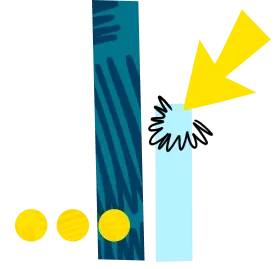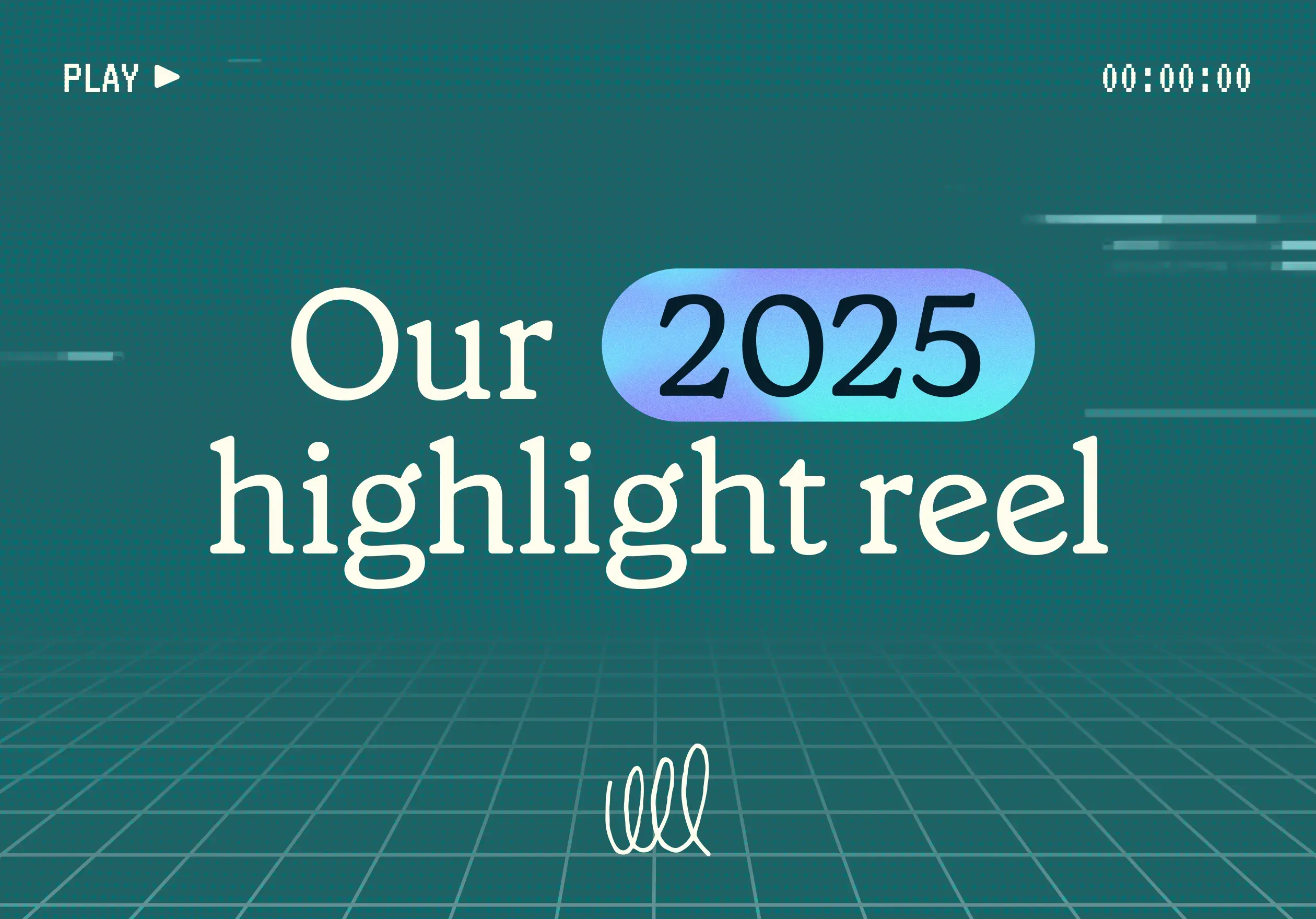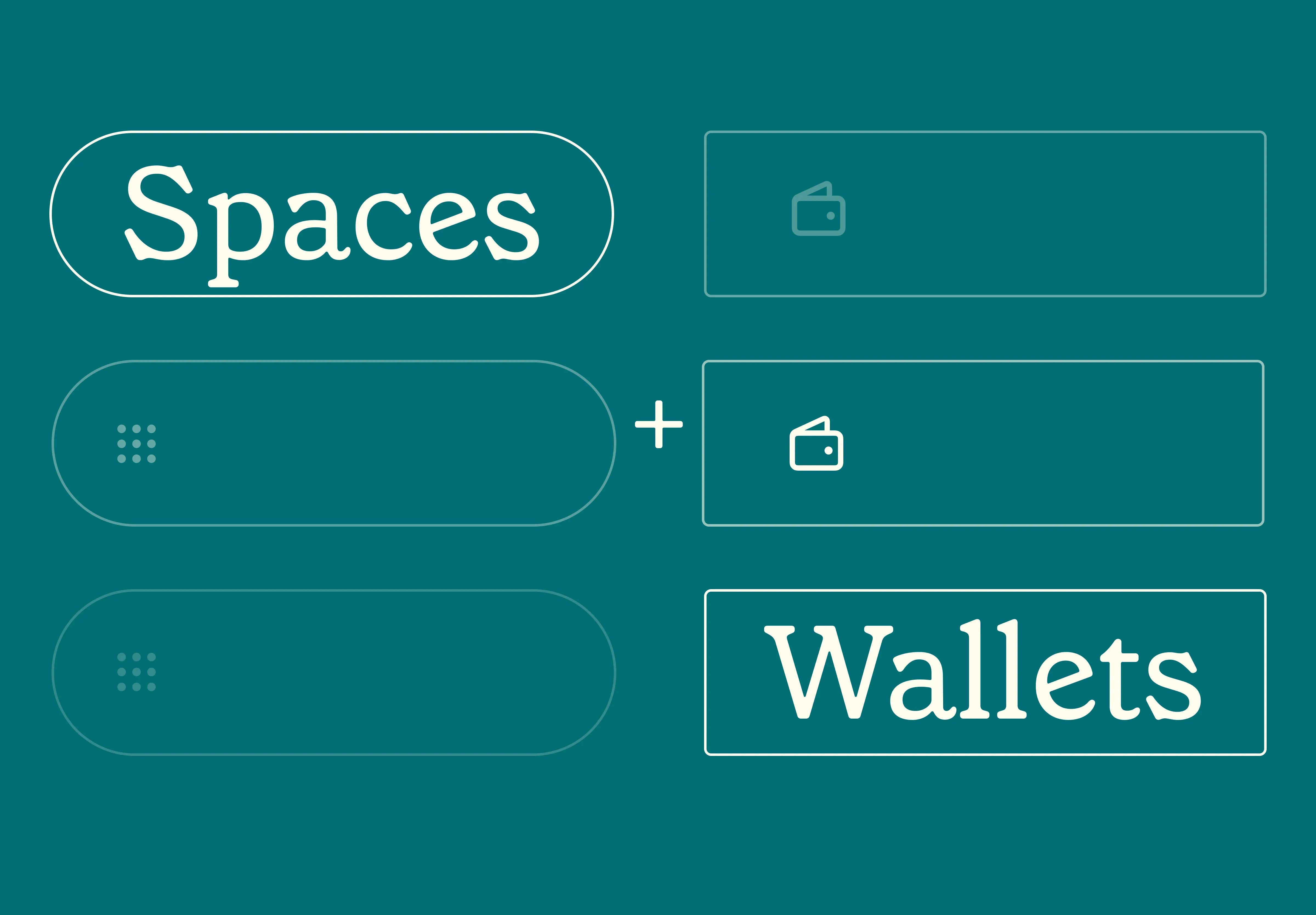14 Nov 2025
|12 min
Product discovery process
Find out what product discovery is, why it's important, and the steps you can take to develop products that meet the needs of your users and the market.

Product discovery is the process of identifying and understanding the needs of customers and the market and developing products to meet those needs.
By creating products that are not only functional and easy to use, but that also meet the needs and desires of the people who will use them, product teams can increase engagement, satisfaction levels, and ultimately, the success of the product.
In this article, we’ll discuss the importance of product discovery, provide a step-by-step guide for product discovery in the early phases of the design process, and suggest some tools you can use to help you get started.
What is product discovery?
Product discovery can make or break the success of a product. At its core, it’s the process of identifying and understanding the needs of customers and the market in order to develop products that meet those needs. In other words, it's about finding the right problem to solve, and then developing a solution that meets that need.
Sound simple? Even big companies get it wrong. Google launched its social media platform, Google+, without conducting sufficient user research and failed to attract a large user base, ultimately leading to its shutdown. On the other hand, when Airbnb was first launched, its founders conducted extensive user research and created detailed user personas, ultimately designing a platform that allowed travelers to connect with hosts and experience destinations like a local. The result was a highly successful platform that disrupted the traditional hotel industry.
Why is product discovery important?
Product discovery is especially important for UX design, as it lays the foundation for the entire user experience. By understanding the needs of customers and the market, UX designers can create products that are not only functional and easy to use, but that also meet the needs and desires of the people who will use them. This can lead to increased engagement, higher satisfaction levels and, ultimately, greater success for the product.
The concept of product discovery has been around for centuries, with early inventors and entrepreneurs using trial and error to create products that met the needs of their customers. However, it wasn't until the 20th century that the idea of formal product discovery processes emerged.
In the 1960s and 1970s, companies like Xerox PARC and IBM developed user-centered design methods that focused on understanding the needs of users and incorporating their feedback into the product development process. In 2001, the Agile Manifesto further centered user needs, encouraging teams to iterate more about what customers want.
Since then, the discipline of product discovery has continued to evolve, with new tools and techniques emerging to help designers and product teams better understand their customers and the market. Digital tools have made product discovery easier for teams of all sizes and distributions.
While product discovery can be ongoing – known as continuous product discovery – you can also adopt it incrementally, particularly during the early stages of the design process.
A step-by-step guide to product discovery
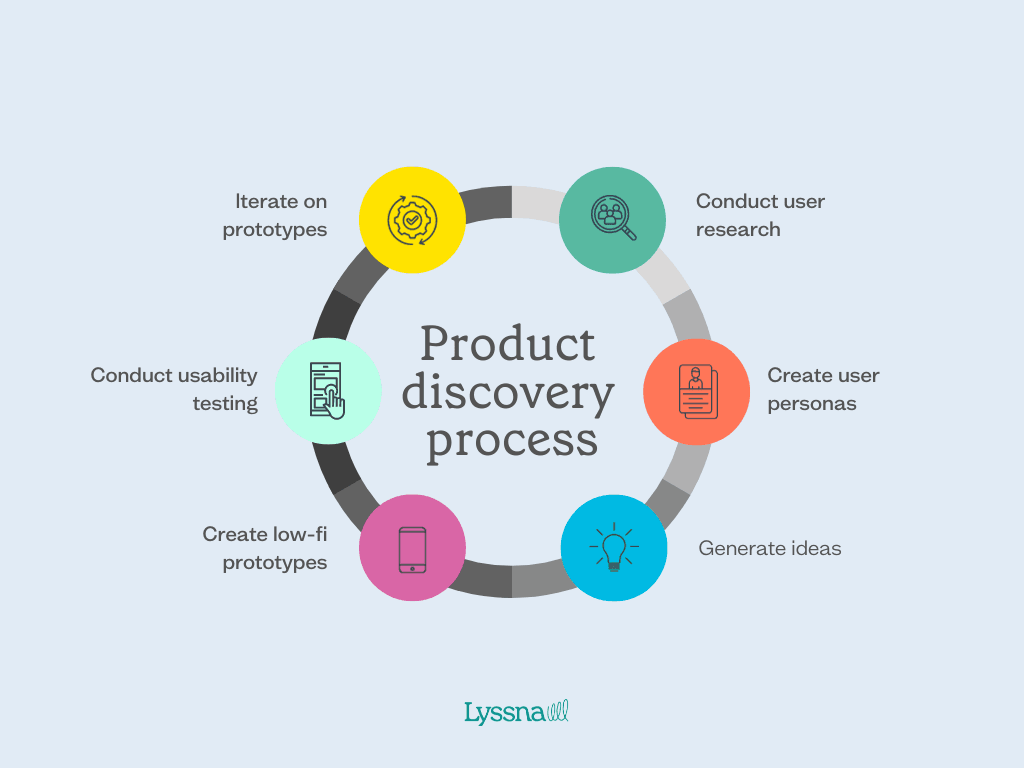
At its core, product discovery is about 1) learning about users, and 2) using those learnings to build better products.
There are a variety of frameworks available for thinking about it. Below, we map out a step-by-step approach that can help you implement product discovery in the early phases of the design process.
Conduct user research to gain insight into user needs and behaviors. User research involves gathering information about the target audience, their behaviors, and their needs. You can accomplish this through interviews, surveys, and observation of how users interact with similar products in the market. By understanding the user's needs, you can create products that are more effective and satisfying to use.
Create user personas based on research findings to represent different user types. User personas are fictional characters that represent different users. They’re based on findings from user research and help you design for the needs of specific people rather than an overwhelming set of data and responses. Think of it as a way to make design decisions more concrete and approachable.
Conduct ideation sessions to generate a variety of potential solutions to user needs. This can include brainstorming, sketching, and whiteboarding. The goal is to generate a variety of ideas to explore and evaluate in the next steps. While involving stakeholders throughout the process is important, this is a good step toward bringing in a diverse group of thinkers.
Create low-fidelity prototypes to quickly test and refine ideas. Low-fidelity prototypes are simple and quick to create, allowing you and your team to test and refine ideas quickly. This can include sketches, paper prototypes, or digital wireframes. By creating and testing prototypes, you can get feedback on the ideas generated in the ideation sessions, refining them before investing too much time and resources.
Conduct usability testing to gather feedback on prototypes and refine the solution. This can include observing users as they interact with the prototype, or conducting interviews to gather feedback. Either way, your goal here is to refine the solution to better meet the needs of the user.
Iterate on the prototype based on feedback until the solution meets user needs. Whether you’re changing the prototype, or going back to the ideation stage to generate new ideas, iteration is key. The goal is to continue refining the solution until it meets the needs of the user and is ready to move on to the next stage of development.
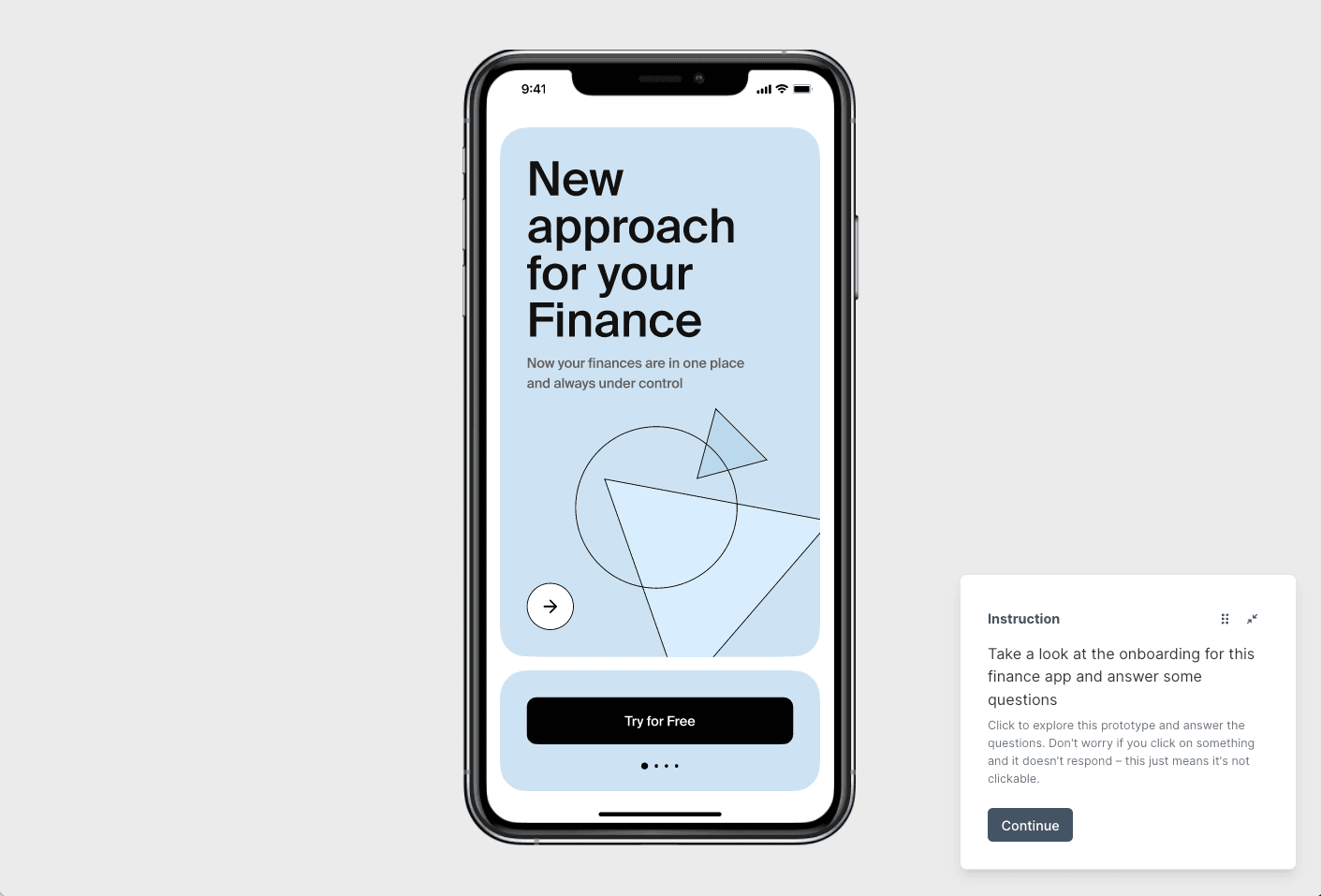
An example of a prototype test in Lyssna
Let’s put this into practice with a hypothetical example. Let’s say you wanted to design an app that helped people track water intake throughout the day. You could use the above framework to:
Conduct surveys and interviews to better understand people’s current water intake and what they’d want to see in your app.
Create personas based on clusters of users, such as “busy professionals” and “workout warriors.”
Brainstorm a ton of different solutions based on these users’ distinct needs, like gamifying the water tracking experience or different ways to send notifications.
The design team could then create some mockups for research participants to use and provide feedback on.
Analyze feedback and track this against your KPIs.
Change your prototypes and test again.
The alternative would be, say, jumping to step 3 and just deciding to gamify the water tracking process. That may not meet users’ needs, or it may only meet the needs of one persona. Good product discovery creates a more methodical approach to ideation and design, and can save you from developing and launching something that doesn’t have an audience.
Best practices for successful product discovery
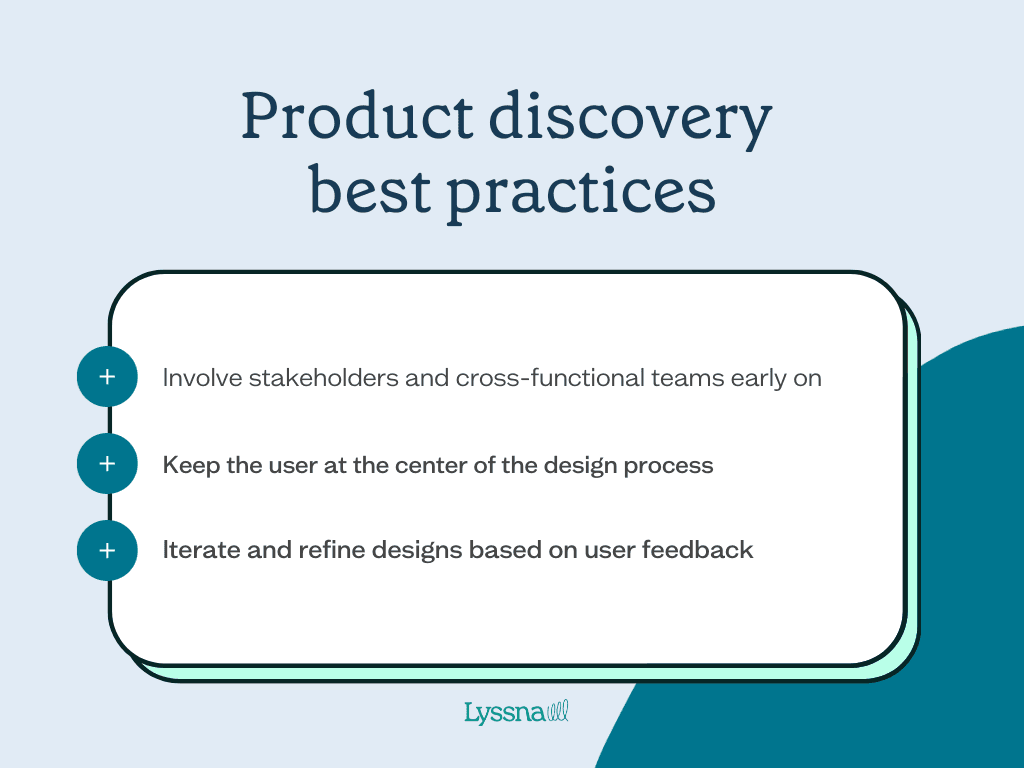
Product discovery requires collaboration, creativity, and user-centered design. Here are some best practices to help you achieve success:
Involve stakeholders and cross-functional teams early on. Product discovery involves multiple stakeholders, such as product managers, designers, developers, and marketers. To ensure that everyone is aligned with the product vision and goals, get these teams involved early in the discovery process. By getting different perspectives in the room early, you can also spot potential roadblocks, align on priorities, and ensure that everyone is working toward the same objectives.
Keep the user at the center of the design process. Seems simple, but it’s worth constantly reminding yourself and your team why you’re doing this. To do this, involve users in every stage of the process, from research to testing and iteration.
Iterate and refine based on user feedback. Remember that the goal here isn’t to achieve perfection right out of the gate, but to refine over time, confident that you’ve explored the possibilities for your product and its intended users. In other words, test early and often, use feedback to identify areas for improvement, and make necessary changes.
Helpful digital tools for product discovery
If you’ve built product discovery thinking into your workflow, you’re already ahead of the game. Fortunately, there are a variety of digital tools that make the process approachable to teams of any size.
Survey tools
In order to gain basic insights on users, make sure you cast a wide net. Some tools that can help break ground here include:
Google Forms: A free tool that allows you to create surveys and collect feedback from users.
SurveyMonkey: A survey tool that allows you to create and distribute surveys to collect feedback and insights from users.
Design and prototyping tools
Soon enough you’ll need to mock up products and prototypes. Some popular (and approachable) options include:
Sketch: A digital design tool that allows you to create interfaces, wireframes, and prototypes.
Figma: A cloud-based design tool that allows for real-time collaboration and prototyping.
InVision: A design and prototyping tool that allows you to create interactive prototypes and conduct user testing.
Check out our prototyping tools article for a more in-depth run-down.
Usability testing tools
We’re a bit biased here, but usability testing is one of the most important parts of this process. There are a variety of usability testing tools you can use – Lyssna, for example, allows you to conduct five second tests, preference tests, prototype tests, card sorting tests, and more so you can build out a rich base of knowledge about how your prototypes and designs are working.
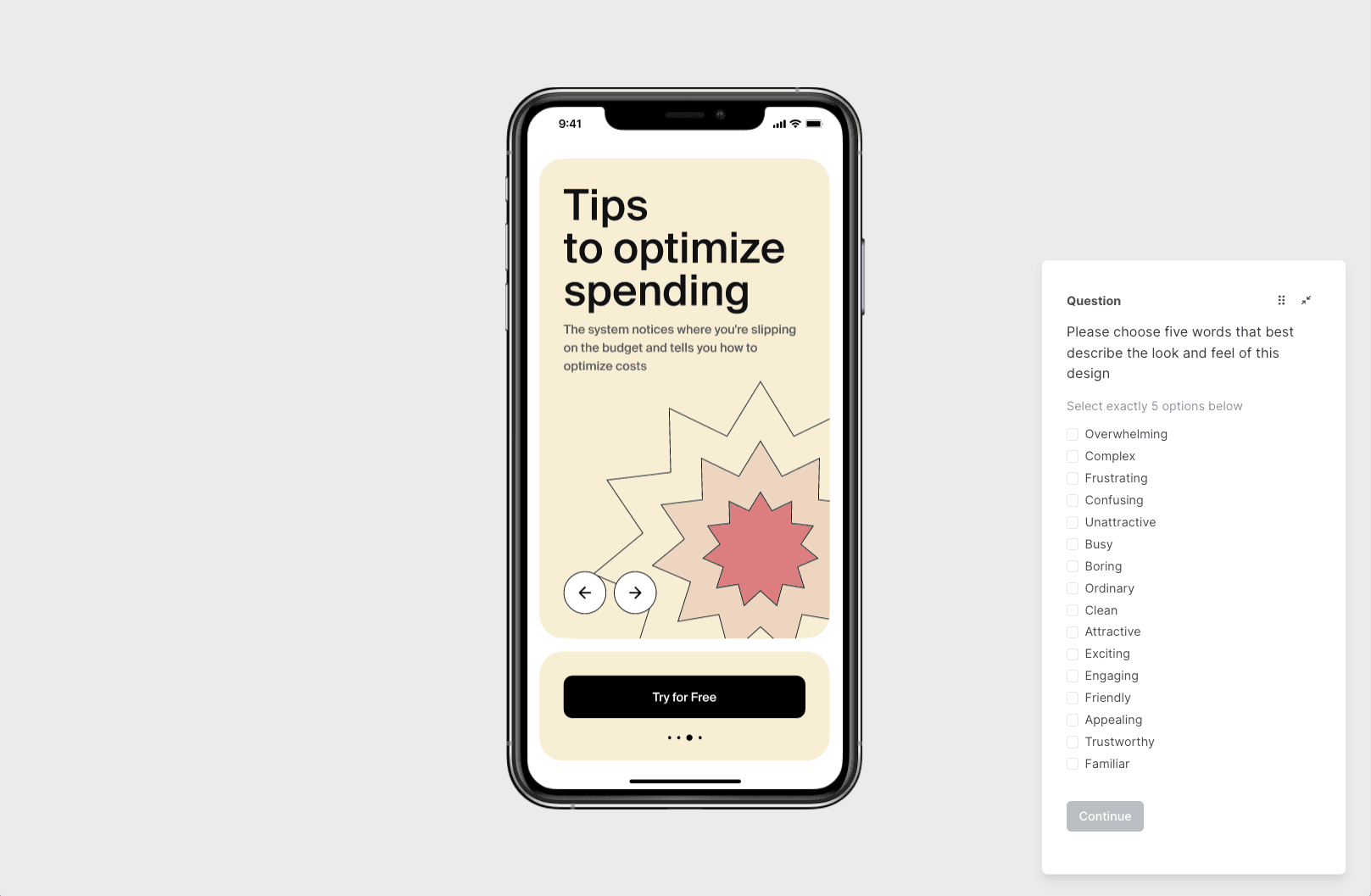
An example of prototype testing in Lyssna
User journey mapping tools
If you’re getting stuck trying to enhance the user experience, it may be worth drilling down on the personas and running them through a user journey. Here are some digital tools that can help you create user journey maps:
Miro: A digital whiteboard tool that allows you to create user journey maps and collaborate with your team.
Lucidchart: A visual collaboration platform that offers templates for user journey maps and other UX-related diagrams.
Persona creation tools
Personas are key to understanding your users’ needs and behaviors, but you don’t have to create them from scratch. Here are some digital tools that can help you create personas:
MakeMyPersona: A persona creation tool that allows you to create, share, and collaborate on personas.
Xtensio: A platform that offers templates for creating persona research, as well as other UX-related documents.
Get started with product discovery
Product discovery is an important part of the product development process that can determine the success or failure of a product. By taking a step-by-step approach to product discovery, designers and product teams can better understand their users' needs and behaviors, create user personas, ideate potential solutions, prototype and test those solutions, and iterate until the final product meets user needs.
While product discovery isn’t a one-size-fits-all process and can vary depending on the product, industry, and user base, incorporating these steps into the design process can lead to more effective and satisfying products.
By prioritizing product discovery, you can create products that not only meet the needs of your users but also drive innovation.
Elevate your research practice
Join over 320,000+ marketers, designers, researchers, and product leaders who use Lyssna to make data-driven decisions.
Frequently asked questions about product discovery
You may also like these articles
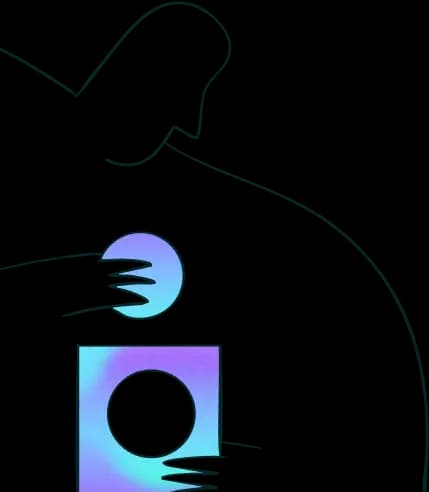
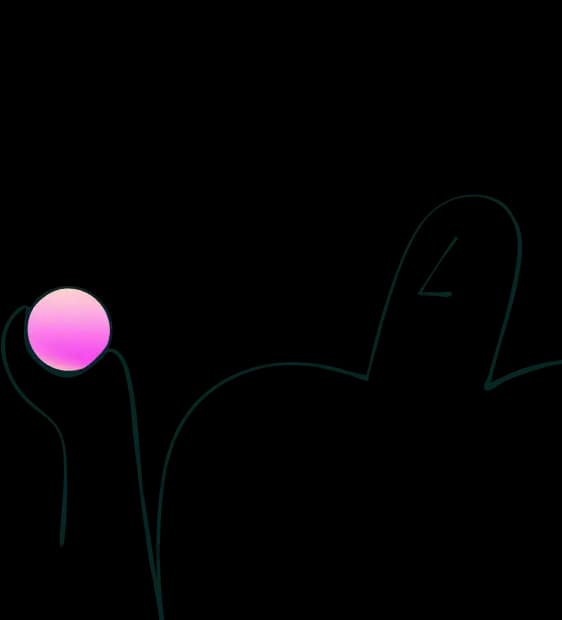
Try for free today
Join over 320,000+ marketers, designers, researchers, and product leaders who use Lyssna to make data-driven decisions.
No credit card required

